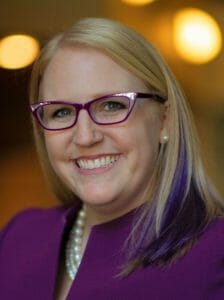

Today, there are more open positions than applicants, which means we have to make those first several days better for new hires. Chances are they still have a few more options waiting if the first week at your organization goes poorly, so it’s critical we make new hires feel welcome and validate that their choice to take this position over another was the right move.
You likely have a solid day one in place for new hires that checks the necessary compliance boxes and hopefully welcomes them into the organization beautifully.
But keep in mind, day two is a great opportunity to position your organization ahead of the rest. Be the team that has a meaningful and more effective onboarding process than everyone else.
New hires expect the red carpet on day one, but it’s just as important, if not more, to plan for day two, particularly when most senior care organizations are simply throwing new staff to the wolves at that point, which inevitably pushes them away from the company and sometimes the entire profession.
1. Get to know them
While the first day will be filled with paperwork and training videos, day two needs to go deeper. Managers should take time on day two to get to know each new hire as a person. Create a simple “get to know you” sheet that includes questions about the team members’ family, hobbies and preferences on how they like to be recognized for good work, for example.
Employees have lives outside of work and would like to bring their whole self to work, when possible. Knowing more about employees shows you care and can help you understand them better. When you care about what they care about, they will care more about what you care about. But it’s hard to genuinely care for employees you don’t really know.
2. Repeat parts of day one…again
We throw so much at new hires on day one and expect them to remember it all. Then, we throw them out on the floor because “they’re good to go.” Instead, we need to protect our new hires more and be sure day two is a time for deepening their understanding of, and connection to, the organization and their role.
Be sure to offer another tour, because once isn’t enough, and reintroduce key people throughout the first week because it’s tough to remember several names at the same time, particularly when staff is masked.
And on day two or beyond, they will likely have questions that are still unanswered. Be sure they have access to someone who can help them without judgment or criticism.
3. Emphasize the fulfillment in service
In a recent NIC Chat, CEO Cindy Baier from Brookdale Senior Living spoke about what she calls the “second paycheck.” She was referring to the relationships and connections between staff and residents. Yes, your employees can work retail for the same pay, but will they have the opportunity to have a cup of coffee with a Nobel Peace prize winner? Those are the perks to share.
The new workforce wants purpose and meaning in their work. This profession has that to offer. We must communicate that story to our new hires. Take time on day two to introduce new hires to residents who are willing to share their stories.
It’s time to reexamine onboarding
If you are finding that people are leaving after day one, week one, or month one, it’s time to reexamine your onboarding approach. We know teams are short-staffed and need more hands on the floor, but if we continue to neglect the new-hire process, we’ll be left with a worse situation as new hires continue to leave.
Talk to your recently hired employees and get feedback on what worked versus what was missing from their onboarding experience. From that feedback, create a detailed onboarding checklist to ensure each new hire gets the same thorough and positive experience. A checklist can fool-proof the process, so the left hand doesn’t think the right hand covered topics in training that were actually missed.
In today’s labor market, every little (and big) improvement for employees counts. It’s time to make day two count!
Workforce thought leader Cara Silletto, MBA, CSP, works with organizations of all sizes to reduce unnecessary employee turnover by bridging generational gaps and making managers more effective in their roles. She is the author of the book, Staying Power: Why Your Employees Leave & How to Keep Them Longer.
The opinions expressed in McKnight’s Long-Term Care News guest submissions are the author’s and are not necessarily those of McKnight’s Long-Term Care News or its editors.





